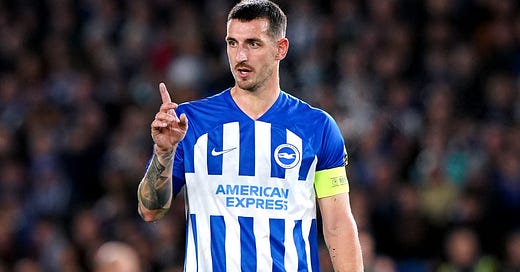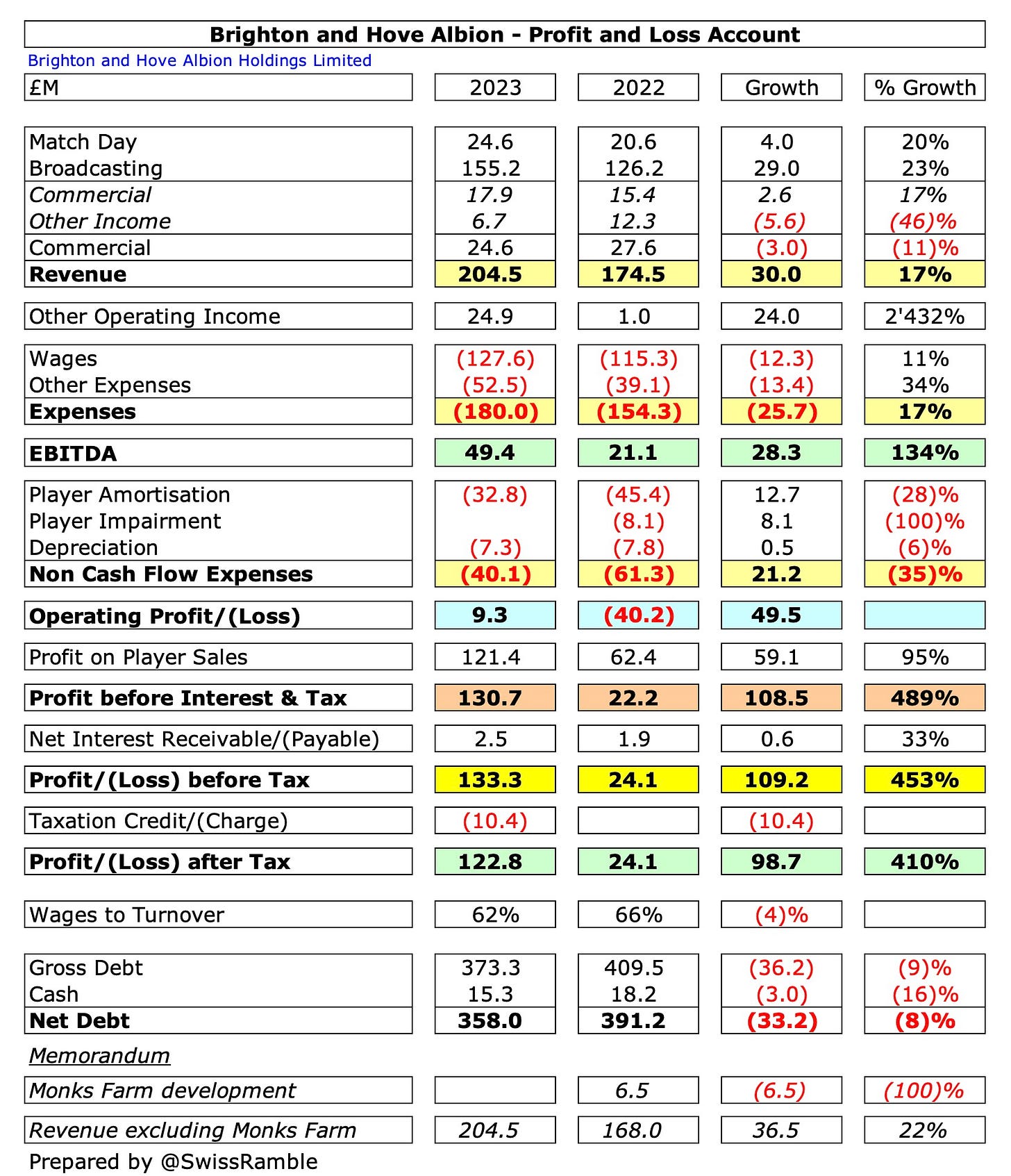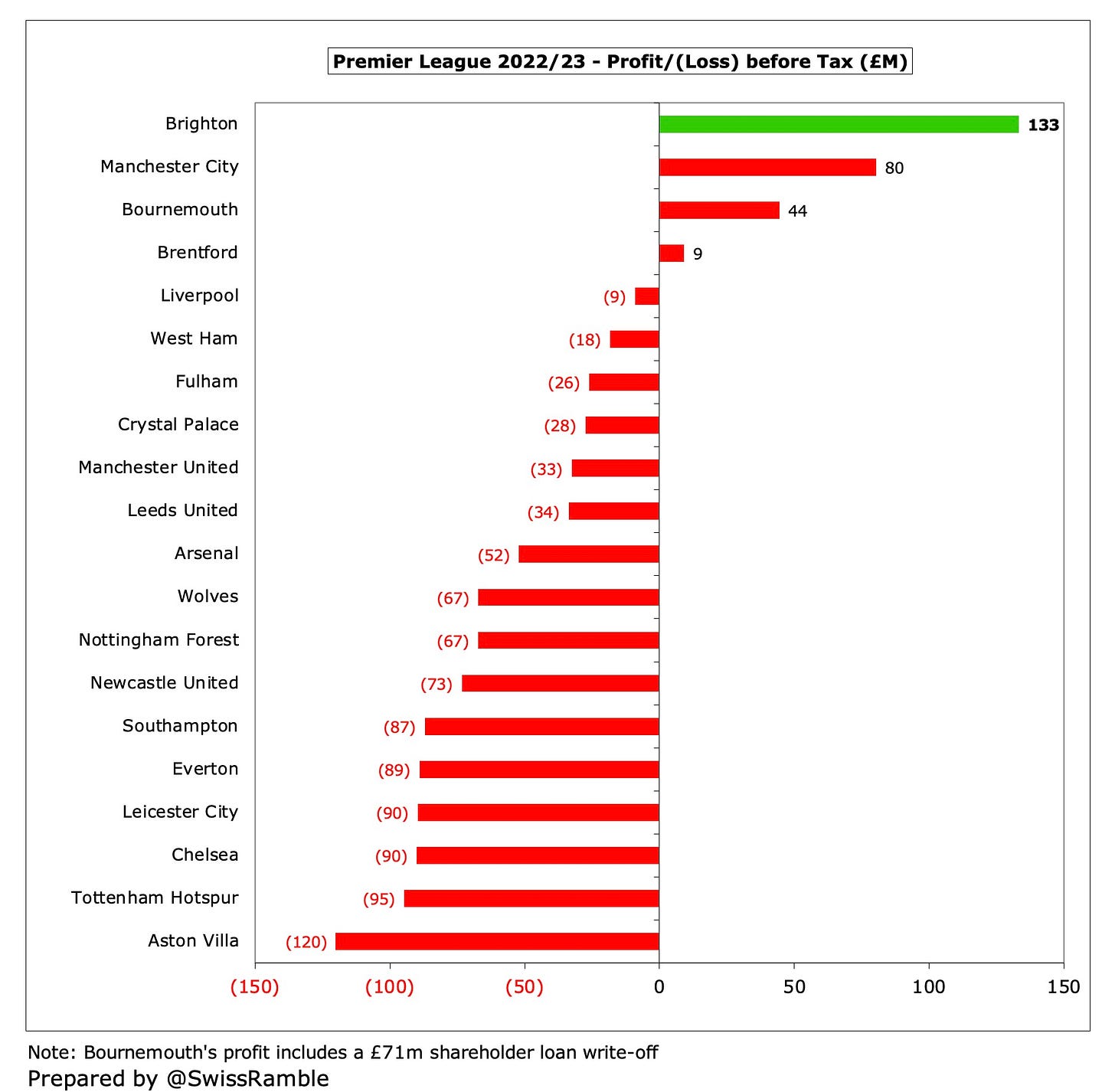Brighton and Hove Albion’s 2022/23 accounts cover a season that owner Tony Bloom justifiably described as the “most successful in our 122-year history”.
The chairman’s pride was fully understandable, as the club finished sixth in the Premier League, thus qualifying for Europe for the first time ever, and also reached the semi-finals of the FA Cup.
This was achieved despite Brighton losing head coach Graham Potter and five of his backroom staff in early September, after they were headhunted by the new Chelsea hierarchy.
However, this turned out to be a blessing in disguise, as Roberto De Zerbi continued the club’s progress up the league to its highest ever position, while his team’s playing style attracted many admirers.
Profit/(Loss) 2022/23
Off the pitch, the results were just as good, arguably even better, as Brighton’s pre-tax profit surged from £24m to a very impressive £133m.
Revenue increased by £30m (17%) from £174m to £204m, which was the club’s highest ever, while profit from player sales just about doubled from £62m to £121m.
At the same time, Brighton managed to keep their costs under control, as operating expenses only rose £4m (2%) to £220m, while they had £2.5m net interest receivable.
The figures were also boosted by £25m other operating income, up from just £1m in the previous year, which included £23m compensation from Chelsea for Potter and his support staff.
Profit after tax was lower at £123m after considering a £10m tax charge.
The main driver of Brighton’s revenue growth was broadcasting, which rose £29m (23%) from £126m to £155m, due to the new Premier League deal, exacerbated by higher merit payments. Match day was also up, increasing by £4m (20%) from £21m to £25m.
Both of these revenue streams set new club records, but commercial was down £3m (11%) from £28m to £25m, as the previous season included £6.5m from the Monks Farm development project,.
Brighton’s wage bill rose £13m (11%) from £115m to £128m, but there was a significant reduction in the other important staff cost, as player amortisation reduced by £12m (28%) from £45m to £33m. In addition, there was no repeat of the previous year’s £8m player impairment, while depreciation slightly fell to £7m.
However, other expenses were up by a third (£13m) from £39m to £52m.
Brighton’s £133m pre-tax profit was easily the best in last season’s Premier League, ahead of Manchester City £80m and Bournemouth £44m, though the latter was boosted by a £71m owner loan write-off.
In contrast, most of the clubs in England’s top flight lost money, with half of them posting losses more than £50m, led by Aston Villa £120m, Tottenham £95m, Chelsea £90m, Leicester City £90m and Everton £89m.
To place these performances into perspective, Brighton’s bottom line was more than a quarter of a billion pounds better than Villa – in a single season.
Little wonder that Bloom observed, “Overall, the accounts show an exceptional profit for the period, and what is incredible once again is that, while we’ve delivered our best ever season on the field, we’ve also delivered our best ever results off it.”
In fact, Brighton’s £133m pre-tax profit is the second highest ever recorded in England, only surpassed by Tottenham’s £139m in 2017/18 (driven by the hosting matches at Wembley while the new stadium was being constructed). Only three English clubs have ever managed to post profits above £100m.
Keep reading with a 7-day free trial
Subscribe to The Swiss Ramble to keep reading this post and get 7 days of free access to the full post archives.







